In reference to embroidery, Digitizing is the art of rendering a graphic design as a three-dimensional stitch pattern that only embroidery machines and digitizing software can interpret. It is both a creative and a technical process. The file that a digitizer creates can be read by the embroidery machine, which in turn lays the thread on the material in a logical stitching order, recreating the original artwork.
Often people hear the word “digitizing” and equate the term with a “digital” photo. Others believe the business of embroidery is as easy as putting a picture in a scanner and pushing a button to start the embroidery machine. Nothing can be farther from the truth.
True digitizing is a manual process that, like many professional skills, takes years to master. One must understand how to analyze the artwork, break it down into segments and determine, stitch by stitch, an organized sewing path. The digitizer establishes the stitching order, filling in the design one element at a time, with different types of stitches creating different effects, as an artist would create a painting. Throughout the process the digitizer must keep in mind the way each type of fabric will react to the “push” and “pull” of the thread. The end result is an embroidery file that runs smoothly, with the stitches floating upon the fabric, filling in the design layer by layer, “painting” the design in thread. Your design is transformed from a simple flat graphic into a work of three-dimensional embroidery art.
